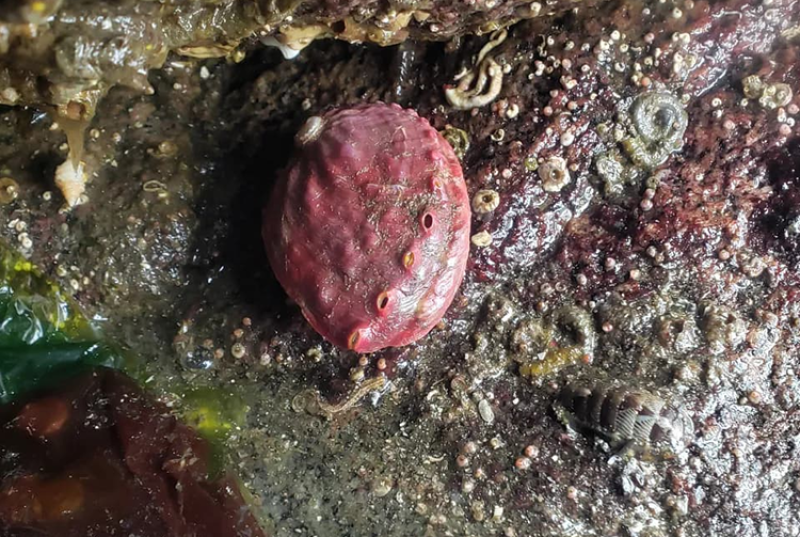Pinto abalone is the northernmost abalone species on the west coast of North America, and the only abalone species found in Alaska. Pinto abalone live in kelp beds along well-exposed coasts. Abalone meat is a delicacy across numerous cultures and has always been an important traditional food and component of the Tlingit and Haida way of life.
Historically, there was a commercial abalone fishery in Southeast Alaska, but the State of Alaska closed it in 1996 due to drastic declines in harvest. Legal harvest continues today through personal use and subsistence fisheries, with restrictions including a bag limit of five per day.
Although the commercial abalone fishery remains closed, the pinto abalone has not recovered.
Enhancing abalone habitat and farming the species through aquaculture are potential ideas to recover the population. Currently in Alaska, no one is farming abalone to maturity for sale or for food, so there may be commercial opportunities. There are still many aspects of abalone culture that would need to be researched and developed.
All About Abalone
Abalone are large gastropod mollusks, or large snails, that live in the marine environment. The pinto abalone can grow up to 6 inches in length and has a multicolored, oval shape. The interior of the shell is a beautiful iridescent mother-of-pearl that is used in jewelry and other decorations.
Abalone are found in the cold waters around the world. In Alaska, they need rocky shores and kelp forests to thrive. They are usually found crawling on the sea floor in kelp beds and along rocky beaches.
Sometimes they can be found exposed during extreme low tides.
Abalone are a key part of the Alaskan ecosystem. Their numbers are influenced by other species, including sea otters, sea urchins, and humans. They are found in Alaska from the outside coast of Chichagof Island, south to the Canadian border and east to Ketchikan and Metlakatla.
Community Engagement
NOAA Fisheries and Alaska Sea Grant have formed an Alaska abalone working group. It brings together tribal, state, federal, and non-profit partners to discuss a sustainable future for abalone. One aspect of the working group’s efforts is to solicit community input on the species’ recovery and sustainability strategies. Alaska Sea Grant has an open survey to collect information from the public on their interests and thoughts concerning abalone’s importance and potential, including farming.
Ashley Bolwerk has been leading the community engagement initiative through her Alaska Sea Grant fellowship with NOAA Fisheries. She stated, “My goal in doing these community outreach trips and events is to engage with communities to determine what abalone recovery and sustainability strategies they are most interested in seeing in their community. This information can then be used by the abalone working group that I have been facilitating to create goals and objectives.”
Ashley has provided marine science lessons to more than 100 K-12 students in the Hoonah area. She has introduced students to marine species and taught them about pinto abalone’s history and future. She has also connected with tribal partners and others in the community to tackle the working group’s objective of discussing potential strategies for the population.
The engagement of community and tribal partners is creating a strong foundation for the abalone working group to lay out long-term strategies for the recovery and sustainability of pinto abalone. We are considering public workshops, monitoring test sites, habitat suitability modeling, and other avenues of collecting knowledge as potential tools for species recovery and sustainability planning.
To become involved or for more information, contact ashley.bolwerk@noaa.gov.



